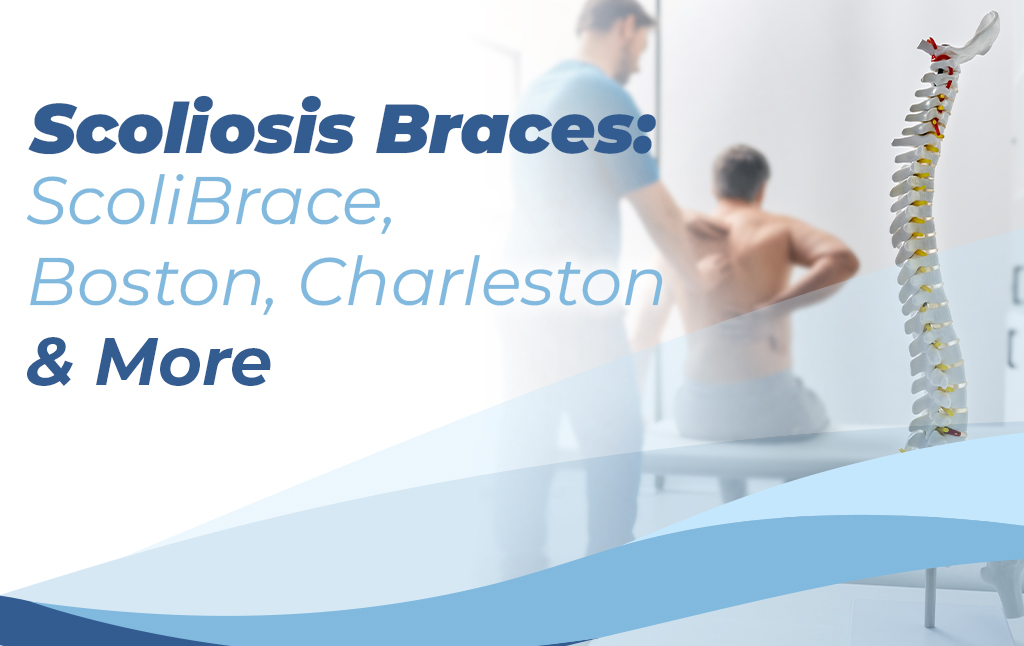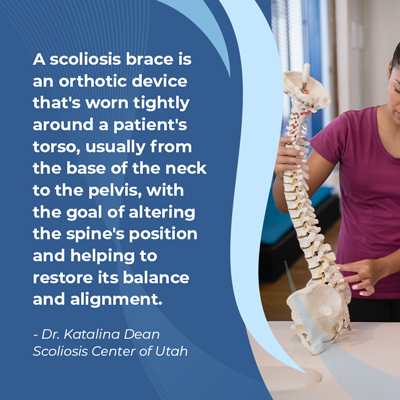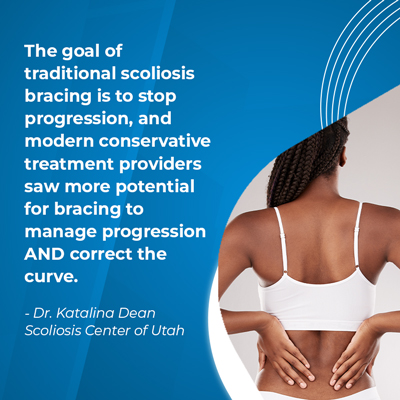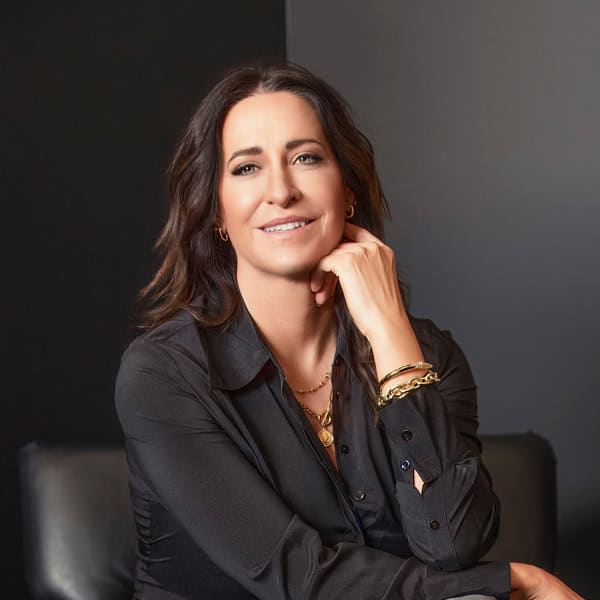Blogs
Scoliosis Braces: ScoliBrace, Boston, Charleston & More

Following a diagnosis, the most important decision patients have to make is how to treat their scoliosis moving forward. There are two main treatment approaches to choose between; traditional scoliosis treatment can involve traditional braces like the Boston and Charleston bending brace, and modern conservative treatment values the corrective potential of the ScoliBrace®.
Scoliosis bracing is a common form of conservative treatment. While traditional braces like the Boston brace use a 3-point pressure system, modern Clinicians saw the need for something different and designed the corrective ScoliBrace® in response.
Scoliosis Bracing as Treatment
A diagnosis of scoliosis means an unnatural sideways-bending and rotating spinal curve has developed, and the structural changes within the spine and related postural changes need to be taken seriously.
The spine’s natural curves are key to its overall health and function, and if a single spinal section develops an unnatural curve, it doesn’t just affect the single section, but can disrupt the biomechanics of the entire spine.
Scoliosis has been around since ancient times, and bracing has been used as treatment for centuries.
 A scoliosis brace is an orthotic device that’s worn tightly around a patient’s torso, usually from the base of the neck to the pelvis with the goal of altering the spine’s position and helping to restore its balance and alignment.
A scoliosis brace is an orthotic device that’s worn tightly around a patient’s torso, usually from the base of the neck to the pelvis with the goal of altering the spine’s position and helping to restore its balance and alignment.
But different types of braces offer different potential results, just as the two main treatment approaches they’re associated with will shape future spinal health in different ways.
When the spine develops scoliosis, its vertebrae have become unnaturally tilted and shift out of alignment with the rest of the spine, and because the spine gives the body structure, stability, and balance, the body can also become off balance from the head to the feet.
Brace design differs from traditional to modern and will shape how a brace functions, so let’s start with traditional scoliosis bracing.
Traditional Scoliosis Bracing: the Boston and Charleston Bending Brace
Scoliosis was first documented by the Greeks, and bracing has been around as a form of treatment for almost as long.
The most commonly prescribed TLSO brace (thoracic lumbar sacral orthosis) used in traditional treatment is the Boston brace: a rigid brace that’s commonly recommended for full time wear, and this can mean anywhere from 16 to 23 hours a day and potentially until skeletal maturity is reached.
The main challenge to bracing success is compliance; a brace has to be worn exactly as prescribed to be effective, and considering the main age group affected by scoliosis are adolescents who don’t want to look or walk differently than their peers, brace wear prescriptions aren’t always followed.
If a brace is rigid and bulky, it’s more difficult to hide under clothes, and understandably, this can also make it uncomfortable: a further challenge to compliance.
The Boston brace is applying pressure to the curve at certain points, and the goal is to squeeze the spine into a straighter alignment, but this type of pressure can also weaken the spine over time.
Traditional braces like the Boston use spinal immobilization to limit motion in the thoracic spine and lumbar spine, and the most commonly prescribed brace for nighttime wear is the Charleston bending brace.
Charleston Bending Brace
The Charleston bending brace is designed to be worn during sleep; this brace is custom fitted based on a cast taken of a patient’s torso; it’s the first nighttime scoliosis brace.
Because this brace is designed to be worn while lying down, it doesn’t have to account for movement so can apply hypercorrective force.
The Charleston applies lateral forces to push the curve towards the back’s midline so the spine is straighter and more aligned; this type of pressure wouldn’t be possible if the brace’s design also had to focus on maintaining the neck’s alignment over the torso and the torso’s alignment over the pelvis during movement.
The Charleston is mainly used in cases of lumbar curves that are mild or moderate, but aren’t as effective with complex or high degree curves.
A benefit of the Charleston is that young patients don’t have to wear the brace to school or in front of friends as it’s worn strictly at night: good for compliance.
 The goal of traditional scoliosis bracing is to stop progression, and modern conservative treatment providers saw more potential for bracing to manage progression AND correct the curve.
The goal of traditional scoliosis bracing is to stop progression, and modern conservative treatment providers saw more potential for bracing to manage progression AND correct the curve.
The Modern Corrective ScoliBrace
The evolution of bracing has culminated in the design of the world’s most advanced scoliosis brace: the ultra corrective ScoliBrace®.
ScoliBrace® designers observed the potential of traditional braces like the Boston to slow progression, and wanted to extend it further to include 3-dimensional correction.
The ScoliBrace® designers also saw the need to address compliance by using computer aided design and advanced scanning software to ensure each brace is fully customized to suit a patient’s body type, posture and curve type.
The ScoliBrace® also saw the challenge of young people constantly needing assistance to remove and put on traditional braces that opened at the back and designed the brace to be easily put on and removed at the front.
In addition, the ScoliBrace® is a flexible brace that can be easily concealed under clothes and further customized with fabric pattern and color choice.
ScoliBrace® Function
While traditional braces address scoliosis in two dimensions through lateral pressure, there is still the spine’s rotational component, and the ScoliBrace® addresses scoliosis in all 3 dimensions for potential 3D correction.
The ScoliBrace places the spine into an overcorrected position.
The ScoliBrace® also uses spinal coupling versus spinal immobilization to exert pressure on the curve, and this allows for movement rather than immobilizing the spine during wear, and this adjustment means spinal flexibility can be maintained as well as the spine’s surrounding muscle strength.
A spine that’s not surrounded by strong muscles is one that will be lacking support and stability, and this makes it difficult for the spine to maintain its natural curves, alignment, and remain balanced.
Allowing for more corrective movement while wearing the brace also means the ScoliBrace® can be combined with a scoliosis-specific exercise program like ScoliBalance® to further potential treatment results.
So patients need to be aware of the different types of braces available, but also the treatment approach they are associated with because no brace on its own has the potential to treat scoliosis effectively; the complex nature of the condition necessitates the application of multiple treatment modalities for specific results.
In conservative nonsurgical treatment, ScoliBalance® and ScoliBrace® work together to improve spinal alignment, flexibility, muscle balance and strength for 3-dimensional corrective results.
Conclusion
There are a number of scoliosis braces available to patients from traditional braces like the Boston brace, Charleston bending brace, Providence brace, Milwaukee brace, Wilmington brace, Spinecor brace, Rigo chêneau brace, and the Gensingen brace to the ultra-corrective modern ScoliBrace®.
Scoliosis is a complex spinal condition with many different variables. From severity levels ranging from mild scoliosis to moderate and severe scoliosis to different types of scoliosis, scoliosis curves, and locations within the spine, no two cases are the same: necessitating an individualized treatment approach.
Treatment can be equally complex from its application to its methodology, and different types of treatment have different effects on long-term spinal health.
Here at the Scoliosis Center of Utah, an innovative treatment approach involves the combination of a corrective brace and an individualized scoliosis-specific exercise program for 3D results.
And through the application of Chiropractic Biophysics®, the position of the most-tilted vertebrae can be targeted and improved by adjusting their position.
As a progressive condition that’s triggered by growth, bracing is most commonly used for treating childhood scoliosis, and in adult scoliosis, bracing is used less for 3D correction, and more for short-term pain management and stability.
The Boston brace works by squeezing the spine through a 3-point pressure system, and while this type of excessive force can alter the spine’s position, a residual effect can be a weaker spine that’s also more vulnerable to injury.
In addition, the Boston uses spinal immobilization which limits the potential for corrective movement and can be associated with weak core muscles due to their lack of use during brace wear.
The Charleston bending brace can apply hypercorrective force because it’s worn during sleep and doesn’t have to compensate for movement.
A brace based on correction that’s used in conjunction with an evidence-based exercise program may correct an unnatural spinal curvature, improve posture, and increase core strength for more spinal support, thus restoring balance and stability to the spine and body.

Dr. Katalina Dean
Dr. Katalina Dean is the founder and clinical director of Scoliosis Center of Utah, in Midvale, UT. Her team specializes in posture correction, spinal rehabilitation, and non-invasive scoliosis care and bracing.
Call Today
Do You Qualify for Care?
Schedule an Appointment Below
